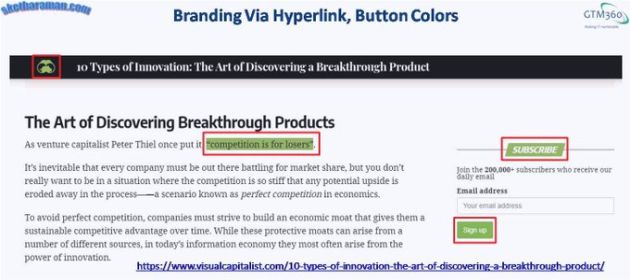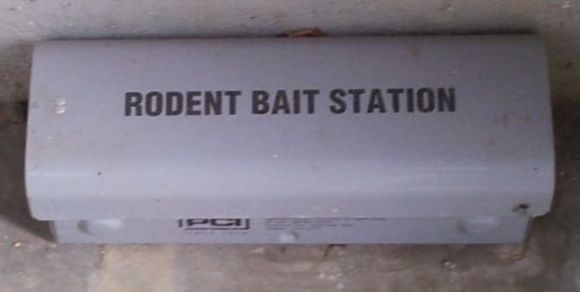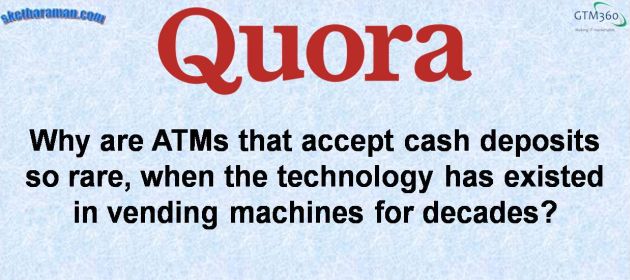Branding is often conflated with marketing and other elements of marketing.
Before we clear some of the misconceptions about branding and amplify some of its other attributes, let me copy-paste the definitiion of branding from our previous post titled Power Of Branding In B2B.
Branding
“Branding” is endowing products and services with the power of a brand. Where a “brand” is a name, term, design, symbol, or any other feature that identifies one seller’s good or service as distinct from those of other sellers. – American Marketing Association
With that bit of housekeeping out of the way, here are 12 things about branding that might come as news to you.
1. Branding ? Marketing
Branding is a subset of Marketing. What’s true of branding is not necessarily true of marketing, especially in B2B. Many Indian IT services companies named in our earlier post titled Power Of Branding In B2B hit billion dollars in revenue in Year 30 without doing any branding. But they did DM, cold calling, email marketing, and many other forms of marketing from Day One.
Brand Marketing:
$1m ARR: Makes Little Sense
$10m ARR: Ok Let’s Do Some
$100m ARR: Most of Marketing
$1B ARR: All of Marketing— Jason ?Be Kind? Lemkin ? ?? (@jasonlk) February 17, 2024
2. Branding Drives Sales
There are two types of advertising campaigns: direct response and brand. According to comscore:
Direct response ads aim at closing a sale or a transaction right here and now. Branding, on the other hand, means investing ad money in building brand equity, which is to say, establishing a brand’s value proposition in the minds of consumers. The return from that investment is probably not going to occur immediately. It may take weeks, months or even years.
At first blush, this description might seem to suggest that direct response campaigns translate to sales and brand campaigns are fluff.
This is not true.
Because:
Sales = Rate * Quantity
Direct response drives quantity i.e. sales volume or number of units sold.
And brand shapes the rate (i.e. unit price), and thereby the sales value in $ terms. In this manner, brand drives sales.
In product categories where suppliers have a leeway over price, branding can help them to increase the rate and thereby drive greater sales without any increase in sales volume. This includes many products and services in the IT industry.
On a side note, I recently proposed this tactic to double the revenue of Mumbai Metro.
Mumbai Metro fares are too low to be viable. My $0.02: Double fares; some people who use metro will stop using it; but some others who are not using it today will start using it; passenger count will remain unchanged; revenue will double; metro will become viable.
— Ketharaman Swaminathan (@s_ketharaman) December 8, 2023
In the extreme situation, when lifetime value (LTV) is spread non-uniformly across the customer base, it’s even possible to reduce quantity and increase sales by using branding to get a disproportionate increase in the unit price. Cognizant fired many customers in ca. 2004 and grew its revenue manifold in the following 10 years. To be sure, the leading IT services company also built new capabilities to sell new services to its remaining customers. But it was due to branding that those customers felt comfortable in firing their incumbent suppliers for those services and sign up with Cognizant for them.
3. Branding Creates Differentation
Branding is not differentiation. Differentiation is actually an effect of branding. Consumers perceive a branded product to be differentiated even if it doesn’t have too many superior features. For example:
- Apple iPhone: Many Android smartphones have way more features than an iPhone but everyone perceives iPhone to be in a class of its own.
The chutzpah of Apple to launch a dud at $899 knowing that Fanbois will spring for the costlier iPhone14 Pro at $999 or Pro Max at $1099. Good job if you can get it.#Marketing #Branding #Propaganda #Brainwashing
— Ketharaman Swaminathan (@s_ketharaman) September 29, 2022
- Salesforce CRM: Many competitors of Salesforce (e.g. Zoho) insinuate that they provide more value than Salesforce but the whole world thinks of SFDC as the “King and Queen of CRM”.
@svembu: I have always pointed out Salesforce spends far more in sales & marketing than in R&D. They charge sky high prices to customers so they can spend all the customers’ money selling to them.
4. Even Differentiated Products Use Branding
Marketers use “better mousetrap” as a moniker for a differentiated product or service. But that doesn’t stop even a mousetrap manufacturer from rebranding its product to RODENT BAIT STATION.
5. Branding Lifts All Boats
The benefits of branding often flow to everyone in the product category, not just the company that does the branding.
Indian coffee chains and restaurants were selling a cup of coffee for INR 25-75 for a long time. Then Starbucks, Costa and other American and European coffee chains entered India, raised the branding of the coffee category to the next level, and proved that Indians would pay INR 200-300 for a cup. Riding on their coattails, Indian cafes and restaurants doubled their prices to INR 50-150.
This is equally true in B2B. The awareness created by SAP and Salesforce for ERP and CRM product categories respectively gave a shot in the arm to other brands like Ramco and Oracle in ERP and Hubspot and Zoho in CRM.
6. Branding Is More For Recall Than Awareness
Branding is more a mid-funnel than a top funnel activity.
The old saying “Out of Sight, Out of Mind” has its origins in consumer goods: Coca Cola is among the top brands in the world. Despite that, it’s also among the top advertisers in the world.
Tried booking a Uber/Ola at peak time in Mumbai. Got "No Cabs Available" message. Went looking for a yellow-top taxi. Struck me later that I didn't even think of Meru – despite using it & blogging about it in the past. Amazing how fast a brand can disappear from consumer's mind.
— Ketharaman Swaminathan (@s_ketharaman) January 31, 2018
But it’s also applicable to B2B products. Salesforce is the category leader in CRM. Virtually everybody who is in the market for CRM will have SFDC in their ICS (Initial Consideration Set) (That’s marketing speak for “everybody who buys CRM will call Salesforce). Still Salesforce spends $2.66 on Sales & Marketing for every 1$ on Product / R&D. (Source: SEC EDGAR). And this is in B2B, which involves companies with organizational memory rather than flightly individuals with short attention spans.
7. Frugal Branding Is A Thing
While large companies spend hundreds of millions on branding, you can dip your toes in branding with very low costs.
One way to do that is to subtly plug your corporate brand colors and typefaces in your brochures, flyers, slide decks, and other marketing collateral. #FunFact: Back in the day when typefaces were custom made, The Economist magazine had one called Ecotype specially made for it. If I recall right, it spent GBP 800,000 for it. Nowadays, of course, you can select a readymade typeface from open source font libraries. I also like Accenture: Its pink color and font (whatever it’s called) are very distinctive.
Another way to do frugal marketing is to use your brand colors for hyperlink, hover, title and button on your website, as Visual Capitalist does.
8. Branding Takes Years
Founders used to kicking off a Google Ads campaigns today and receiving leads from tomorrow might be tempted to believe that branding can be done on-demand. Sorry to rain on their parade but branding can take years, if not decades.
Exhibit A: Since the mid-1990s, around 70% of products on the shelves of American stores have been Made in China. However, even in 2024, fewer than 10% of them are made by Chinese companies. This shows that, while manufacturing is easy, branding is very hard.
9. Branding Is Not Targeted Only At Customers
In Power Of Branding In B2B, we noted that
The sweetspot for branding for both B2C and B2B is high involvement product and services categories. In B2B, high involvement has three attributes: Attachment, frequency of usage, and mission-critical.
By default, high involvement is indexed to customers of your product / service. But there are edge cases where your product / service is low involvement to people who buy and use it but it’s still helpful to do branding for influencers who play a big role in the product selection e.g. carpenters for adhesive, auto mechanics for engine oil.
6/7 That was the day I learned a lesson that, even in B2B, at least in B2B products like ERP that impact an entire company, it is necessary to create branding in the entire company and not restrict our outreach to just influencers and decision makers.
— GTM360 (@GTM360) November 13, 2022
10. Branding Is Not Done Only For Product
The OP of the following post is not happy with the Vande Sadaran brand name for a new class of trains targeted at the Joe Six Pack / Jane Six Pack.
Never name something as “Ordinary”. Really. The Govt ought to talk to some Brand / Marketing specialists. They could have called it “Vande Tejas” or something.
They have assumed that the brand name is meant for the train itself.
I don’t think that’s the case.
According to me, the demand for railway seats so vastly outstrips supply that, even if a train were named ThirdWordShitHole or something like that, it will go full.
In my opinion, the focus of branding in this case is the producer, not the product. The term “ordinary” helps the government to fob off the criticism that it’s elitist and ignores the J6P (Joe or Jane Six Pack). I’m sure the government uses great marketing / branding specialists from McKinsey and other Big 5 companies.
11. Unintended Consequences Of Branding
Sometimes branding works in unintended ways. Here are two fun examples.
Corona Beer: In the early days of coronavirus pandemic, a survey found that Americans were avoiding Corona beer! (H/T @clagett).
Zoom: Fueled by rampant remote working practice during the pandemic, the stock price of Zoom Video Communications, owner of the popular videoconferencing platform, rose by 9%. Which makes sense. But defunct tech company Zoom Technologies, which traded as ZOOM, rose 80%! (Source: FORTUNE magazine).
12. Branding Snafus
When done wrong, branding can backfire. There are zillions of examples of bad branding. Let me cite a recent one:
Comirnaty – koe-mir’-na-tee : Pfizer-BioNTech vaccine brandname.
If you thought that’s branding gone awry, here’s the list of other names that were shortlisted and rejected later: Covuity, RnaxCovi, Kovimerna, RNXtract.
Since they were Covid vaccines launched at the height of pandemic, I’m guessing such convoluted branding didn’t come in the way of blockbuster sales. But other products are not so fortunate.
"Zero Trust Approach".
Arrghhh. Yet another pandemic-era branding fiasco – à la "Social Distancing".
But I guess "Verify Everyone Approach" proved to be a weak CTA – à la "Physical Distancing".https://t.co/mLUNVON5Xi
— Ketharaman Swaminathan (@s_ketharaman) August 5, 2020
One of the most notorious examples of branding gone wrong is New Coke: In the 1980s, when Coca Cola was losing market share to the sweeter Pepsi in blind taste tests, it introduced a new, sweeter formula, and branded it New Coke. The decision caused a huge consumer backlash and was followed by nosediving sales. The company quickly pulled the plug on the new brand.



